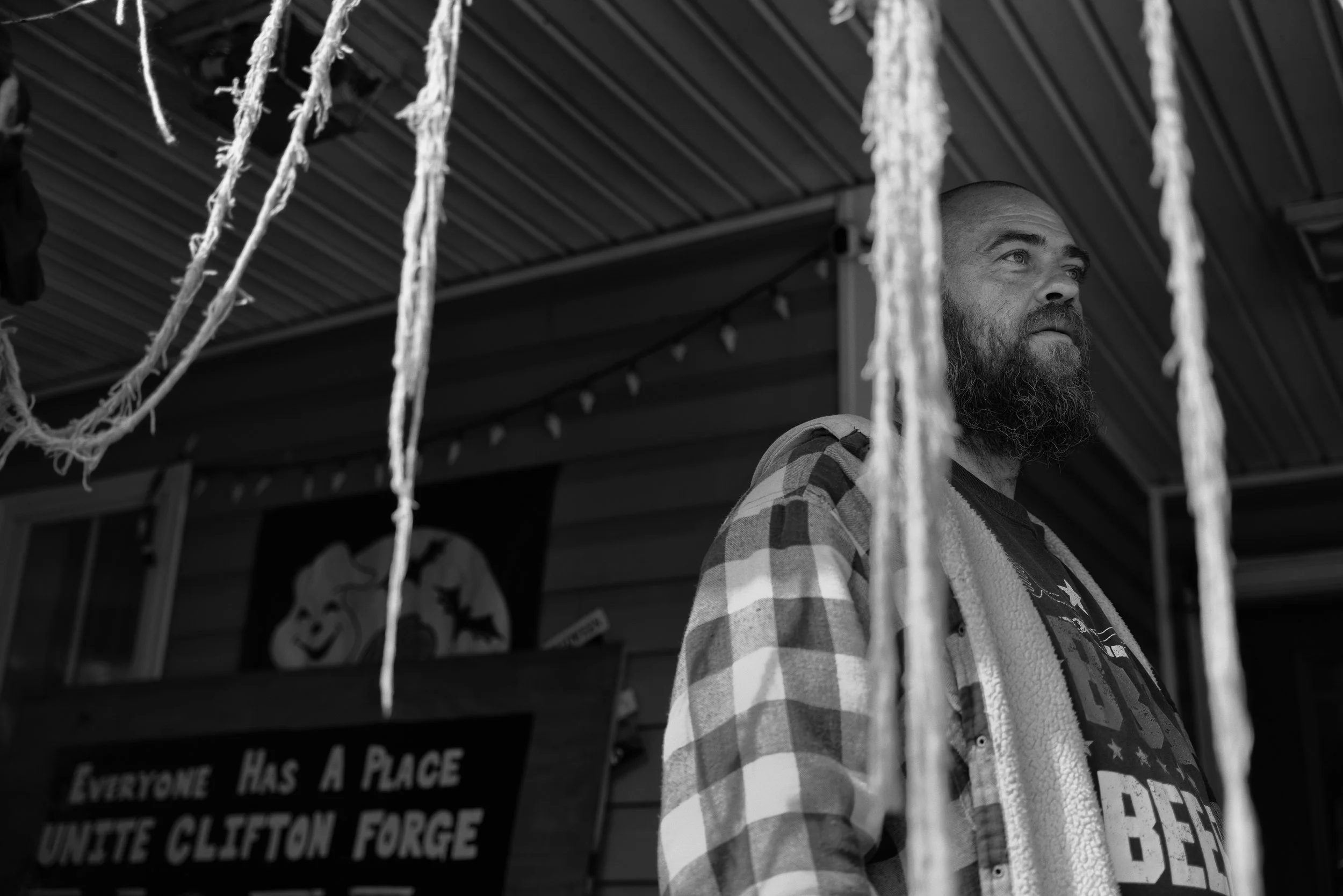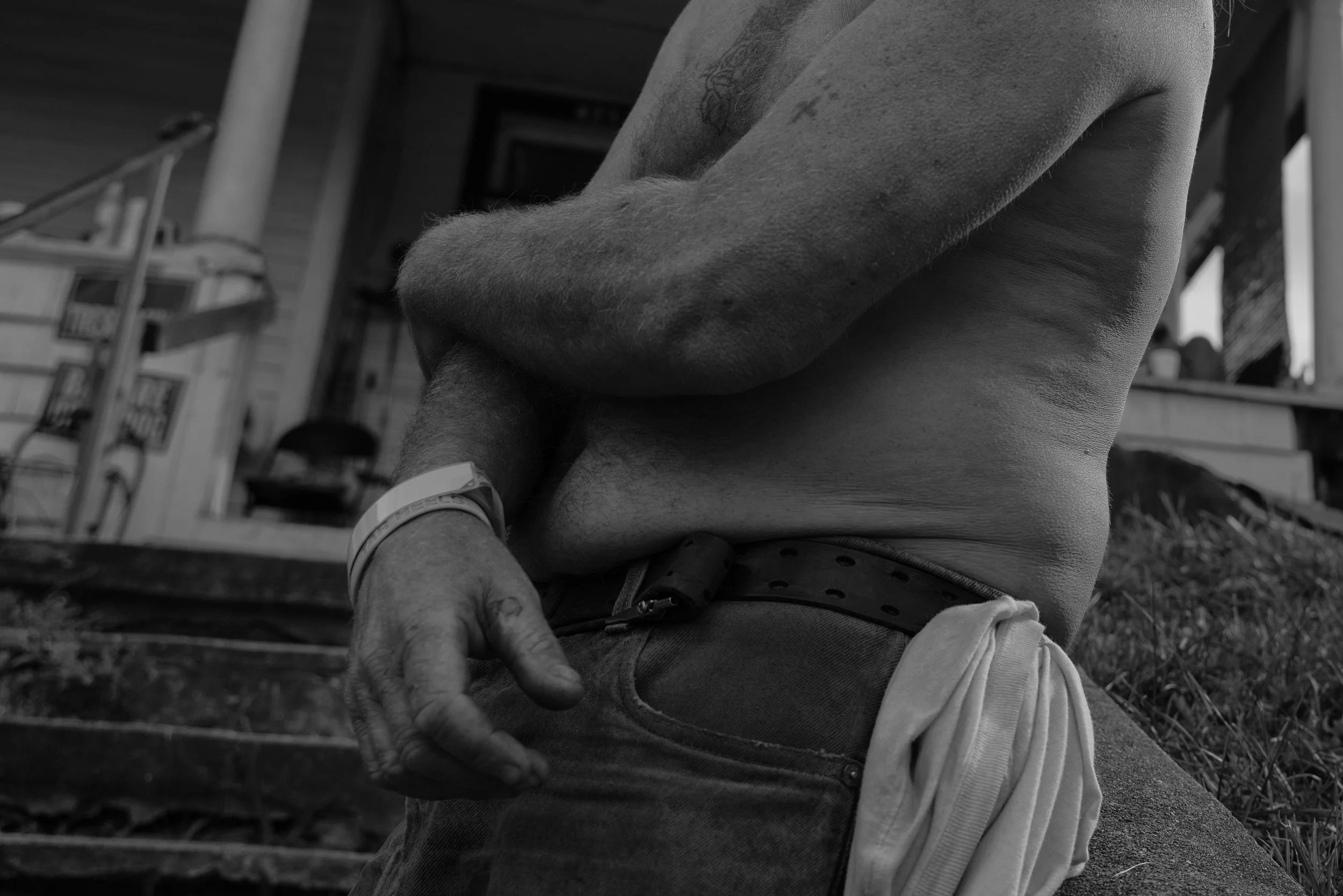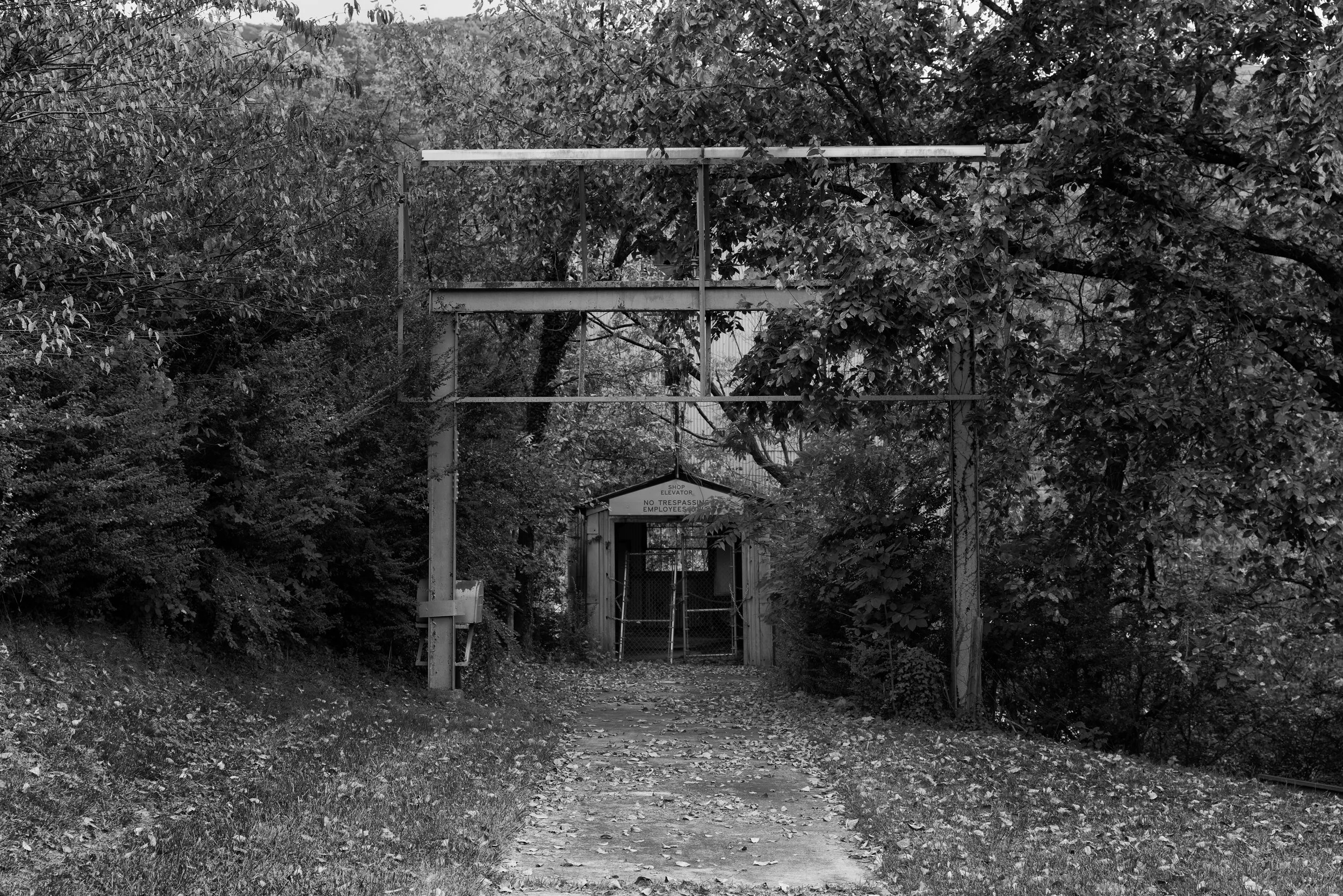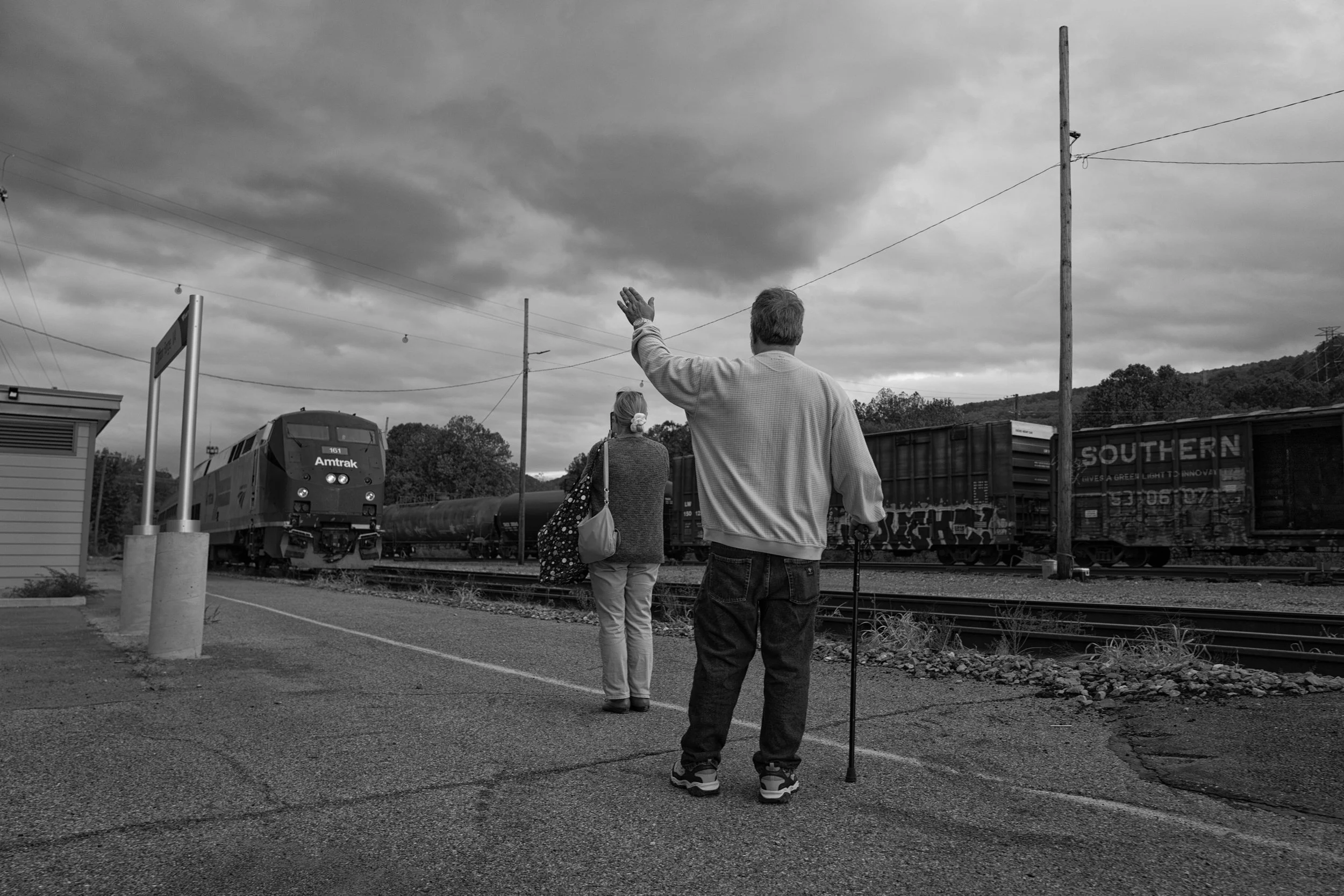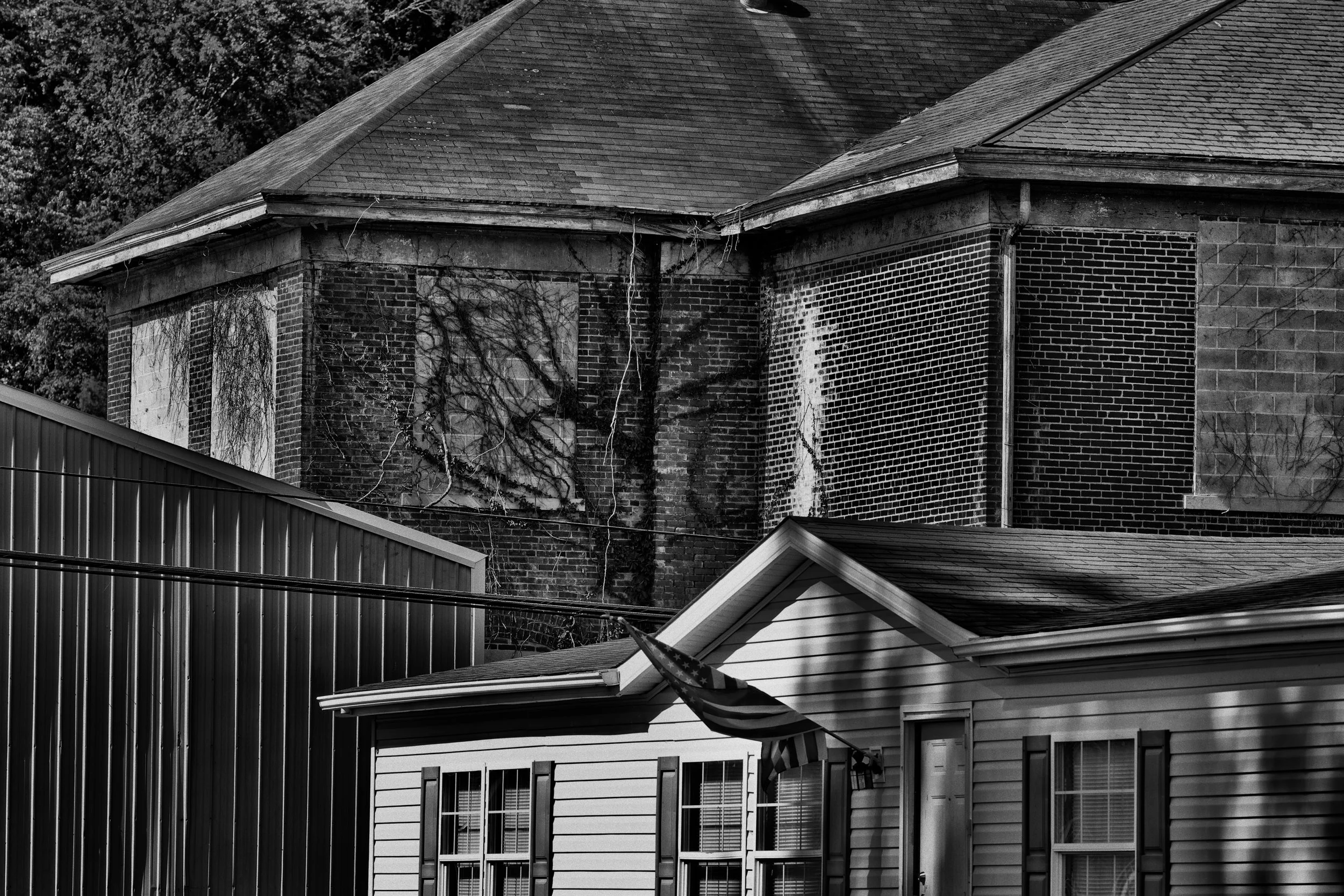A monthly photo column
bY christopher Tyree
VIRGINIA CENTER FOR INVESTIGATIVE JOURNALISM AT WHRO
Using gravity, and some rather strong mules, self-taught civil engineer Moncure Robinson moved a cart of coal along a set of rail tracks he designed in 1831. From a coal seam in Midlothian, Robinson guided his cargo 13 miles away to Manchester's wharves on the James River—making Virginia’s Chesterfield Railroad one of the first to operate in the United States and stoking Virginia’s economic engine.
Towns built on the rails became strings of small, economic dynamos stretching across the commonwealth, supporting good jobs - in transportation, manufacturing, extraction industries and even tourism.
For many of these hamlets, the hey-days are long past. What happened to Virginia’s railroad towns? Who lives by the tracks today? How deep is the poverty? Where are there signs of regrowth and hope? Have old dividing lines between the right and wrong sides of the track changed?
With renewed investment in rail from President Biden's Bipartisan Infrastructure Law, Virginia’s Department of Rail and Public Transportation is developing the Virginia Statewide Rail Plan for 2022 and plans to invest $5.8 billion over the next several years to improve rail infrastructure, develop new routes, bring rail service back to several locations that haven't seen a passenger train in decades, and build high speed access north and south.
Join us as we make regular excursions around the commonwealth visiting struggling to striving rail towns, meeting people who live and work by the tracks, and exploring how the railroad shaped Virginia.
Clifton Forge and Iron Gate
As a boy growing up in Iron Gate, a small town in the Allegheny mountains, I could often tell if the train blasting its horn at the only rail crossing was filled with coal and heading east toward the Norfolk coal yards, or empty and heading southwest toward coal country because of the echo.
The railroad played a pivotal role in developing the communities I called home. Many relatives worked at Chesapeake and Ohio rail yard in Clifton Forge which was just a crooked turn through the hollow from Iron Gate. They shared stories about how locomotives they fixed and drove were changing the landscape of America. One ambitious cousin even owned and ran his own steam train, chugging tourists up the mountain from Covington.
I remember the town bustling with multiple grocery stores, banks, a movie theater, and department stores. My mother was born in the railroad company’s hospital that sat on a hill overlooking the rail yard where my grandmother also worked as a nurse. Today the hospital is a retirement home.
As the coal industry in Virginia declined, so too did some railroad towns that supported the transport of that commodity. On top of that, passenger service was replaced by the automobile and many of the train stations that were the scenes of kisses-good-bye and welcome-home-celebrations were shuttered—including the one in Iron Gate which is now covered in vines.
Though the Amtrak still makes a call on Clifton Forge three days a week, the town is barely chugging. Today the poverty rate in Clifton Forge is 21.9%, almost double the national average.
But the most recent Department of Rail and Public Transportation plan includes preserving the freight line from Clifton Forge to Doswell for expanded east-west passenger service. Outside investors are already buying up and renovating some of the town’s exquisite but dilapidated Victorians for tourists. They hope they come in droves.
Clifton Forge
In 1857 the first passenger train rolled into Clifton Forge. Before long, more than 2,000 rail workers called this hilly town on the Jackson River home. Many of those workers built the C&O's powerful steam engines in the workshops here; but, those operations moved to West Virginia when the industry transitioned to diesel in the 1950’s precipitating the slow decline of the town.
Charles "Chuck" Willis has lived most of his life in Clifton Forge and now owns three homes on Main Street. He hopes to demolish two that are unoccupied and crumbling and build a new house for his family. He also recently painted a campaign sign for a friend of his running for town council with hope a younger voice will bring a new direction to Clifton Forge. Almost a quarter of the town’s population is over 65.
A vintage picture of life on Ridgeway Street in Clifton Forge sits in a store front window that reflects current life on the commercial strip.
On Pine Street (left to right), Demetres Barnette, Sherry Heighter, and Debbie Unroe, listen to Greg "Muggs" Key talk about some of the new investments outsiders have made in the town. Plans include renovating older homes and turning them into different kinds of lodging. This group has been friends since they were young children. Key worked on the railroad for several years and Barnette worked at the railroad's hospital.
Patricia Tucker was born at the Chesapeake and Ohio Railroad Hospital 65 years ago and now sits, rubbing her leg, on decaying steps that once led to the hospitals’ offices. The medical complex was converted into the Scott Hill Retirement Community, and is now her home. Tucker’s father, a military veteran, worked as a brakeman on the railroad for his entire career. Her mother was a “German war bride” and had 10 children. When she was little over 2 years-old, Tucker contracted polio and had a dozen surgeries to correct her curving bones, including pins placed in her leg that ache on cold days.
Lacey Tucker, 48, stands outside his uncle Mike Hosey's house which sits above the rail yard in Clifton Forge. He regularly checks on his uncle, who has cancer. Tucker had just come from the hospital after a series of tests to determine if he'd had a stroke. He half-way jokes that he thinks it is from all the car accidents he’s been in over the years.
The old elevator used to shuttle hundreds of railroad workers from West Ridgeway Street to the rail yard at the bottom of the hill.
Paul Ballard waves as the Amtrak train approaches town. Ballard and his wife Donna, photographing the hour late Amtrak train pulling into the station, came from their home in Boone, W.Va., for a day trip to Clifton Forge. They toured the C&O Railway Heritage Center and the C&O Historical Society offices. Paul Ballard collects model trains. His father worked on the railroad for 46 years.
Iron Gate
Linda Nicely sits in the shadow of a sunflower at her home beside the railroad tracks on Railroad Avenue in Iron Gate. Nicely says that she’s “always lived beside the tracks” and that she finds the sounds of the train comforting.
The bricked up brick facade of the old school house in Iron Gate where both my mother and grandmother went to school. The town is at the headwaters of the James River, and near a rich iron ore deposit. Allegheny Iron and Ore Company opened its blast furnace in the northern end of Iron Gate in the late 1880’s. But by 1919, operations were shuttered as cheaper iron was manufactured in the north. Town lots that once sold for $500 went for $10 after the company left town.
Sophia Hopkins, 19, talks to her family’s dog outside her mother’s home on Railroad Avenue in Iron Gate. Hopkins moved to the area to be with her boyfriend, and lives down the street from her mother.
One of the many uninhabited homes in Iron Gate. The town’s population has shrunk to just 324 people, although the town remains incorporated. At its economic peak, more than 650 people were employed by the rail road, blast furnace, tannery and rubber plant.
Russell Hopkins, 20, holds his puppy on the steps of his mother’s house on Railroad Avenue while his sister Sophia, left, and girlfriend, Tiffany Mellot watch. Russell says he has had a hard time finding a job locally.
Know a place that Christopher should visit? Reach him at chris.tyree@vcij.org.



